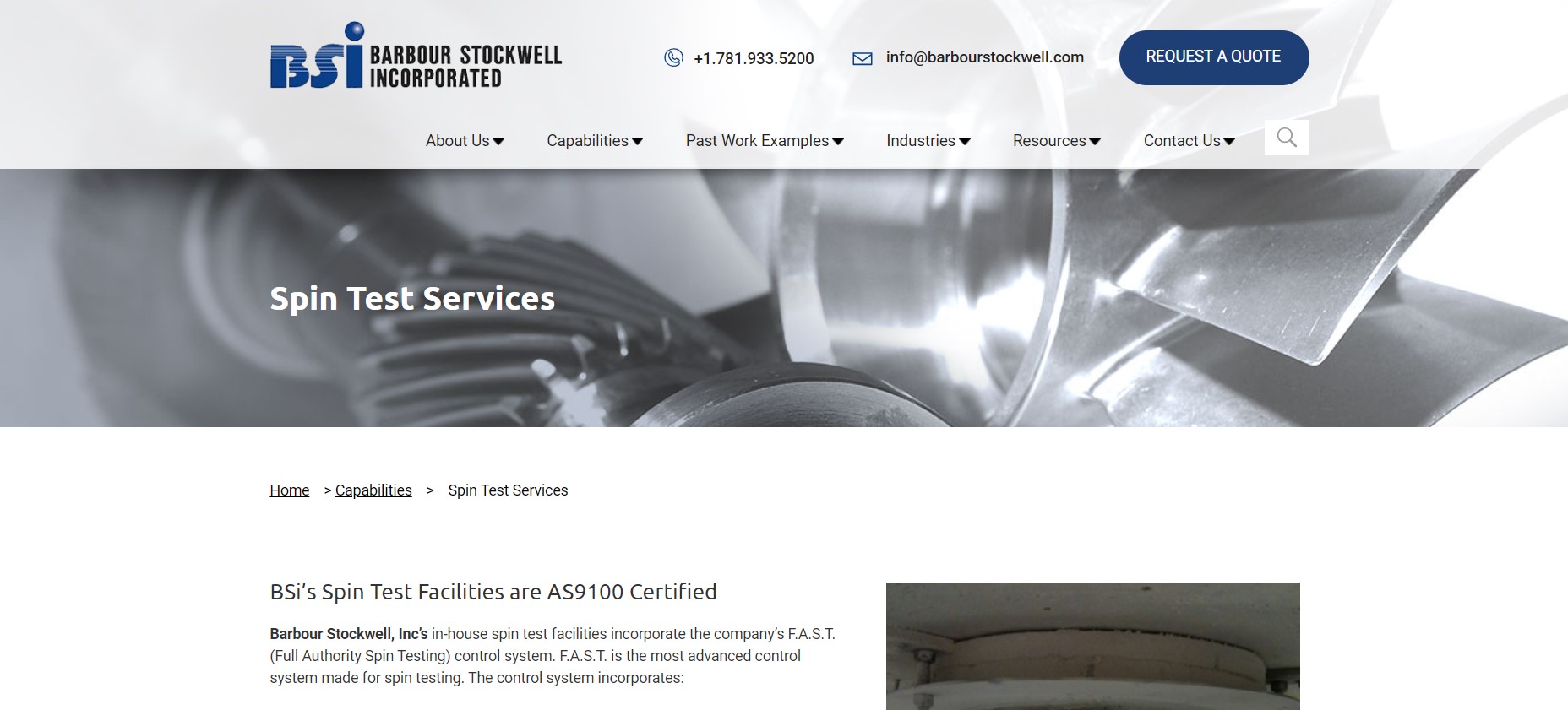With machinery constantly operating at higher rotational speeds, technical failures can easily lead to catastrophic and life-threatening accidents. Spin testing plays a vital role by ensuring the reliability and safety of components used in high-revving automotive engines, aircraft turbines, centrifuges, turbines for power generation, and various other industrial applications.
What is Spin Testing?
Spin testing, or rotational testing, is an essential evaluation methodology used to verify the integrity of any rotating mechanical component at its design operating speeds. It uncovers faults that may not be detectable through conventional static testing.
Spin pits use robust electromechanical drive systems to rapidly accelerate test articles like shafts, gears, impellers, rotors to very high rpm levels in a controlled environment. Hundreds of strain gauges, vibration sensors, temperature probes continuously monitor the component’s stability under stressed loading conditions over desired time durations.
Should defects exist, the high centrifugal forces will reveal cracks, material flaws, resonance issues, lubrication problems, overheating and more. The test data further helps fine-tune engineering specifications for optimal safety and performance.
Spin Methodologies
There are two primary techniques: the stationary and the powered spin test.
In stationary tests, the test article, such as a turbine rotor, is mechanically spun at gradually increasing speeds while mounted on bearings lubricated under pressure. Vibration instrumentation detects resonance frequencies that can severely impact balancing and operation. This methodology proves highly effective for scale model experiments. It allows Engineers to economically evaluate multiple design iterations before final hardware production.
In powered testing, the component like an engine gearbox drives its own spin mechanics during the experiment. This complements stationary data with the ability to evaluate actual startup and rundown characteristics across real-world duty cycles. Specialized test rigs allow controlled fuel delivery to the combustion test article. Knock sensors provide cylinder pressure and temperature monitoring even as exhaust gas gets evacuated safely. The interaction between all integrated rotating sub-components gets thoroughly assessed.
Aerospace Applications
For aircraft propulsion systems that function under tremendous pressures across years of service, proving reliability via spin pit verification is paramount. Turbines, compressor sections, gearboxes, drive shafts, generators, pumps and more undergo rigorous examination well beyond maximum power limits. With jet engine speeds often crossing 10,000 rpm and complex gear trains, detection capabilities get stretched to the extreme.
Take the testing of a turbine rotor – thermodynamic and rotational stresses can easily cause blade cracking leading to a potential uncontained failure. By first stabilizing its stationary spin and then coupling the actual thermal driver environment at full temperature and RPM settings, Engineers uncover resonance anomalies. The simulation helps qualify mechanical integrity for extended periods under peak loading configurations. This ensures airline safety remains the top priority before flagging off production runs.
Automotive Applications
In race cars, Formula One and automotive research, transmissions, clutches, cylinder crankshafts and water pumps are vital to achieving winning streaks. They constantly undergo product development cycles to handle more power and extend durability milestones. Spin pits play the perfect complementary role by replicating punishing RPM situations for assemblies which experience extreme centrifugal and horsepower forces.
Rear differentials are an ideal candidate where high output drivelines subject the entire housing, gear sets and bearings to intense cyclic fatigue stresses while cornering on the track. High-G lateral loads combined with acceleration spikes can overload components. Spin rig experimentation helps optimize lubrication under thermally strained machine operations. The goal is to improve longevity, efficiency and performance benchmarks. This guides smarter design decisions before turning a prototype into the final race-ready unit.
Challenges in Spin Testing
Executing spin trials demand extraordinary test engineering capabilities, equipment sophistications and fail-safe mechanisms. Challenges start right from the complexities in accurately replicating real-world conditions. Components like an aircraft oil pump need evaluations under not just speeds of 20,000 rpm but also under instantaneous acceleration, pressure feeds and temperatures. High dynamic RPM necessitates very special test gearbox configurations and proprietary metrology.
The extreme forces unleashed require exceptional safety systems for containment should cracking or disintegration occur. Debris shields, fragment restraint cages, blast walls, fire suppressors and emergency braking are common. The components themselves demand intricate preparations. Runout accuracies between test article, shafting and instrumentation rotors have to be microscopically precise. The risks amplify further when testing happens on rigs the size of a basketball court spun by 3000 HP motors!
Innovation in Spin Testing
Spin pits continue gaining tremendous sophistication through bleeding edge monitoring. Telemetry measurements can detect nano or pico strains in material coherence! Microwave sensors analyze changes in resonant frequencies to study cracks invisible to the naked eye! Acoustic emission transducers pick up stress wave emissions well before component weaknesses manifest physically. Interferometry, digital image correlation, infrared thermography and more push the boundaries.
Automation and remote testing help address reliability challenges during experimentation. Adapting technologies like safe high-energy non-explosive actuators that can stop rotors in milliseconds! Smart magnetic bearing systems which levitate shafts without contacting wear and tear! Three dimensional computational modeling to accurately visualize component dynamics under all data points gathered! The spin testing landscape transforms at a rapid pace.
The Gold Standards of Spin Testing
For companies like Barbour Stockwell Inc. who provide complex test engineering support, spin testing forms the gold standard for qualification of high speed rotating machinery across aerospace, automotive, energy and industrial sectors.
Thematic test planning, precision instrumentation, data analytics and quality reporting deliver the performance benchmarks and peace of mind for manufacturers to launch products which directly impact human safety in daily living. As environmental stresses grow more demanding and design complexity increases, these specialized testing services become mission-critical engineering partners.




